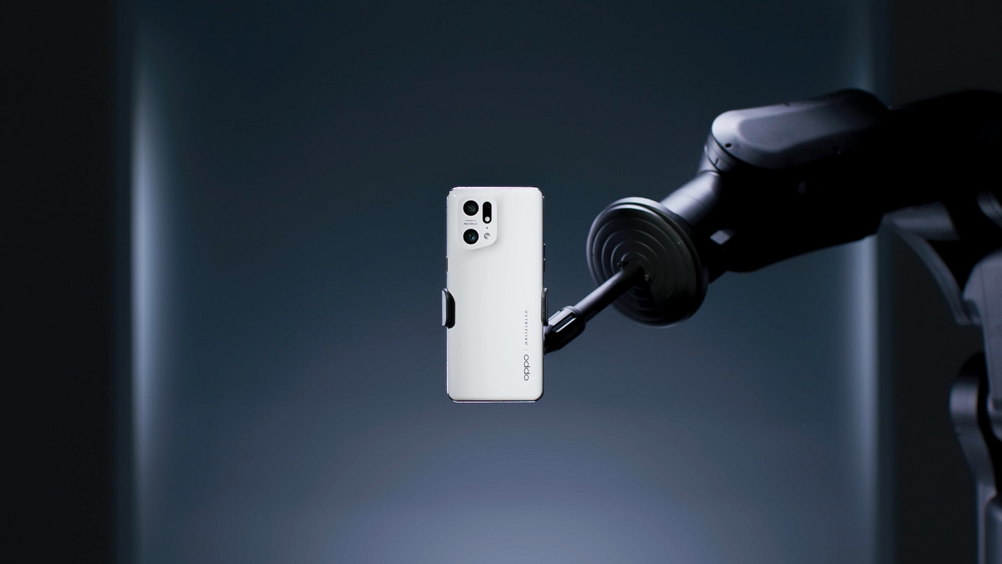OPPO conducted more than 300 tests to build a smartphone with high intelligence, 5-axis camera stabilization, waterproof, durable and long lasting
SHENZHEN, CHINA – Media OutReach – 18 March 2022 – OPPO designed and optimized the hundreds of processes that go into the construction of the OPPO Find X5 Pro, to ensure the first phone off the production line and the thousandth are not just identical twins but of world-class quality.
A trip to the factory floor
The human brain has countless folds. The OPPO Find X5 Pro’s motherboard structure is a little like that of the human brain, connecting all the phone’s components together with an ultra-fine labyrinth of miniature metal paths.

These roads are printed onto the motherboard, in rooms full of robotic printers that can produce up to 10 million boards a month. High-speed modular machines would mount components like the CPU and capacitors onto the board at a level of accuracy that would likely be impossible with the human hand. The smallest component measures just 0.4mm by 0.2mm, and the chip mounter can place more than 400,000 components an hour.
OPPO uses an Auto Optical Inspector camera to check for any minute errors in the process. Every pathway on the OPPO Find X5 Pro motherboard is bespoke, each component is either custom-designed or carefully chosen. The Auto Optical Inspector is programmed to notice any slight deviation from the blueprint.
The last line of solder printed and last chip inspected, the OPPO Find X5 Pro board is baked to melt the metal powder into a rigid conductive map. Every part of this process is carefully controlled, from the humidity and temperature of the factory floor to X-ray testing of the solder every two hours to check its quality. A solder paste inspection machine (SPI) reviews each board. When the smallest steel mesh opening measures just 0.18 mm × 0.18mm, only the highest level of precision is acceptable.
90% of the testing is automated, meaning OPPO’s production experts largely only need to step in at the first signs of any potential issue.

Such attention to detail is all the more important in ensuring the quality of brand new features, like OPPO’s revolutionary 5-axis camera stabilization. Each OPPO Find X5 Pro camera is put through an OIS test for both the lens image stabilization and the sensor image stabilization, checking for its ability not just to function, but operate at the peak of its expected performance.
The OPPO Find X5 Pro is mounted to a machine set to provide a jitter angle of three degrees and 6Hz frequency. This means it wobbles back and forth by 3° six times per second, mimicking handshakes in daily scenarios during photo shooting. The new 5-axis system also compensates for sensor roll, so OPPO also applies a 0.7-degree rolling motion in testing. On top of the traditional OIS motor, the OIS test for sensor-shift (x-axis/Y-axis) and sensor-rotation (Z-axis) are also tested separately. It is the first of its kind and offers the best optical stabilization experience in the industry.
During the tests, shutter speed is set to 167ms which is the same as the frequency of vibration. To pass the test the final image must appear sharp, not blurred.
A look inside the OPPO QE Reliability Lab
There are two sides to the OPPO Find X5 Pro testing program. Some tests are run on every single phone, rooting out any defective components or manufacturing errors.
However, some of the most intensive testing takes place at OPPO’s QE Reliability Lab. It is where OPPO undertakes a kind of torture testing that compresses the hard treatment of years of normal use into a much shorter time window.

In-production testing makes sure specific OPPO Find X5 Pro stacks up to OPPO’s meticulous standards. The QE Reliability Lab makes sure the original design can handle real-world stresses, involving over 150 tests. Here are some of the highlights.
In the Tumble test, the OPPO Find X5 Pro is placed in a 1-meter-long turning chamber that rotates 3.5 times a minute. It emulates the force of the phone being dropped 300 times from a height of a meter, onto a hard surface. Common Drop Test is also conducted as it simulates a typical free-fall scenario from various height from 1 meter to 1.5 meters.
Another test sees the OPPO Find X5 Pro dropped from a height of 10 centimeters to more than 28,0000 times. This simulates the kind of everyday drops,but can eventually weaken the structure of a less well-designed phone.
In QE Reliability Lab, OPPO not only required the phone to meet industry standard but for many tests with even more rigorous standards because OPPO aims to provide not just solid device longevity and reliability but impeccable durability. This dedication to quality is why OPPO put so much work into the strength and finish of the ceramic casing — a 45-stage process that includes calcination at 1000 degrees centigrade.


OPPO Find X5 Pro, a phone that can withstand bumps, drops, freezing, shock, being doused with water and soaked with sweat. Buttons, sockets and fingerprint scanners are tested more than tens of thousands of times to prove the design works in practice just as well as it does on paper.
The OPPO Find X5 Pro is a phone brimming with advanced features and ambitious engineering, but OPPO’s rigorous manufacturing standards ensure they are ready not just for day one but years of use.Read more on the OPPO Find X5 Pro’s camera, display and design technologies at the OPPO website.
#OPPO
The issuer is solely responsible for the content of this announcement.







 " title="
" title="





